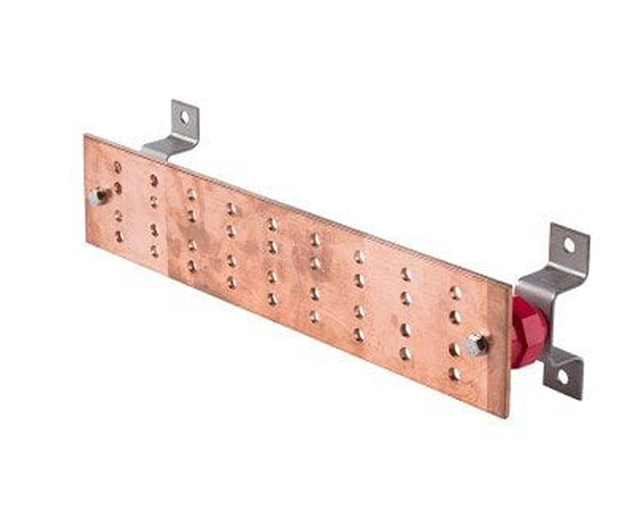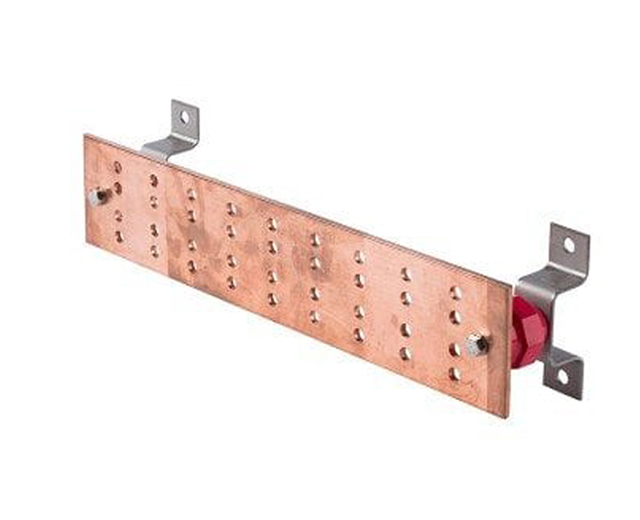

In the field of modern electrical engineering, Bare Busbars play a fundamental role in ensuring efficient and safe power transmission. Whether made from copper or aluminum, these conductors form the core components of electrical panels, switchgear, substations, and more. G and N Fortune Limited offers a complete range of Bare Busbar products including Bare Copper Busbar, Bare Aluminum Busbar, Solid Bare Busbar, and Tinned Bare Copper Busbar, tailored to diverse industrial needs.

A Bare Busbar is an exposed metallic conductor, typically made of copper or aluminum, used to distribute electrical power without insulation. Unlike coated or insulated busbars, Bare Bus Bars are directly exposed to the environment and require precise engineering and installation. Their key advantage lies in their high conductivity, cost-efficiency, and versatile shape options such as Flat Bare Copper Busbar, Round Bare Busbar, or Rectangular Bare Busbar.
Manufacturing a Bare Busbar involves several precision steps:
Material Selection: Choose high-conductivity metals such as Copper (Copper Bare Busbar) or Aluminum (Aluminum Bare Busbar).
Extrusion & Rolling: The metal is formed into specific shapes like Flat, Solid, or Rectangular bars.
Surface Finishing: In the case of Tinned Bare Copper Busbar, a tin layer is applied to improve corrosion resistance.
Quality Control: Each Solid Bare Busbar undergoes conductivity, dimensional, and mechanical strength testing.
G and N Fortune Limited uses advanced CNC machinery and stringent QC protocols to deliver consistent quality across all Bare Bus Bar variants.
The applications of Bare Busbars span multiple industries:
Electrical Panels & Switchgear
Substations & Power Distribution Units (PDUs)
Renewable Energy Systems (Solar & Wind)
Battery Pack Assemblies and EV Charging Stations
Industrial Machines and Transformers
Due to their excellent conductivity and simple form factor, Bare Copper Busbar is ideal for high-current, low-voltage applications, while Bare Aluminum Busbar is favored for large-scale cost-sensitive projects.
The key performance attributes of a Bare Busbar include:
High Electrical Conductivity (especially in Bare Copper Busbars)
Thermal Durability – capable of withstanding high currents
Cost-Effectiveness – particularly Bare Aluminum Busbar for mass applications
Customizability – available in Flat, Round, Solid, or Rectangular forms
Mechanical Strength & Corrosion Resistance – enhanced further with Tinned Bare Copper Busbar
These characteristics make Solid Bare Busbar an ideal solution for systems requiring dependable power routing with minimal energy loss.
Designing a Bare Busbar system requires careful consideration of:
Current-Carrying Capacity – Determine the size and thickness of the bar.
Material Choice – Choose between Copper Bare Busbar and Aluminum Bare Busbar based on conductivity vs. cost trade-offs.
Thermal Expansion – Factor in operational heat and expansion space.
Shape Configuration – Decide among Flat, Solid, or Rectangular designs for optimal layout.
Environment – Use Tinned Bare Copper Busbar for humid or corrosive environments.
Our engineers can assist you with full-stack customization, from design to prototype and final mass production.
At G and N Fortune Limited, we pride ourselves on being a reliable bare busbar supplier with the following advantages:
Full Range of Products: From Bare Copper Busbar to Bare Aluminum Busbar, we support all specifications.
Custom Fabrication Services: Tailored solutions for your power distribution system.
Superior Raw Materials: Only high-purity copper and aluminum are used.
Bulk Supply & Fast Delivery: Large-scale production with guaranteed lead times.
Compliance & Certification: All products meet international standards (RoHS, IEC, etc.).
Whether you need Bare Bus Bar for industrial switchgear or a Solid Bare Busbar for energy systems, G and N Fortune Limited is your trusted partner in power.
FAQ
Bare Copper Busbar is made of pure copper without any surface coating. It has excellent conductivity but may oxidize over time.
Tinned Bare Copper Busbar has a layer of tin coating to improve corrosion resistance, especially useful in humid or corrosive environments like marine or chemical applications.
Bare Aluminum Busbar is lighter and more cost-effective than copper. It is ideal for large installations where weight and cost are primary concerns. However, aluminum has lower conductivity than copper, so it requires a larger cross-sectional area for the same current capacity.
Yes, Bare Busbars are safe when properly installed within enclosed systems like switchgear, panel boards, or substation frames. For exposed environments, appropriate insulation spacing, barriers, or covers must be used to meet safety standards.
Absolutely. G and N Fortune Limited supports custom dimensions, including thickness, width, length, and shape (Flat, Round, Rectangular) for all types of Solid Bare Busbar, Bare Copper Busbar, and Bare Aluminum Busbar. We also accept OEM/ODM orders.
Selection depends on:
Current-carrying capacity
Voltage level
Ambient temperature
Installation method
You can refer to IEC or UL standards, or consult our engineers for sizing recommendations based on your application.
G and N Fortune Limited offers:
Bare (natural) finish
Tinned surface for corrosion protection
Polished or Brushed finishes on request
Yes. We offer bulk wholesale options for all bare busbar types. Products are exported globally with proper packaging and documentation. Lead times and shipping options can be tailored to your project timeline.
Standard stock sizes: 3–5 working days
Custom orders: 7–15 working days, depending on quantity and complexity